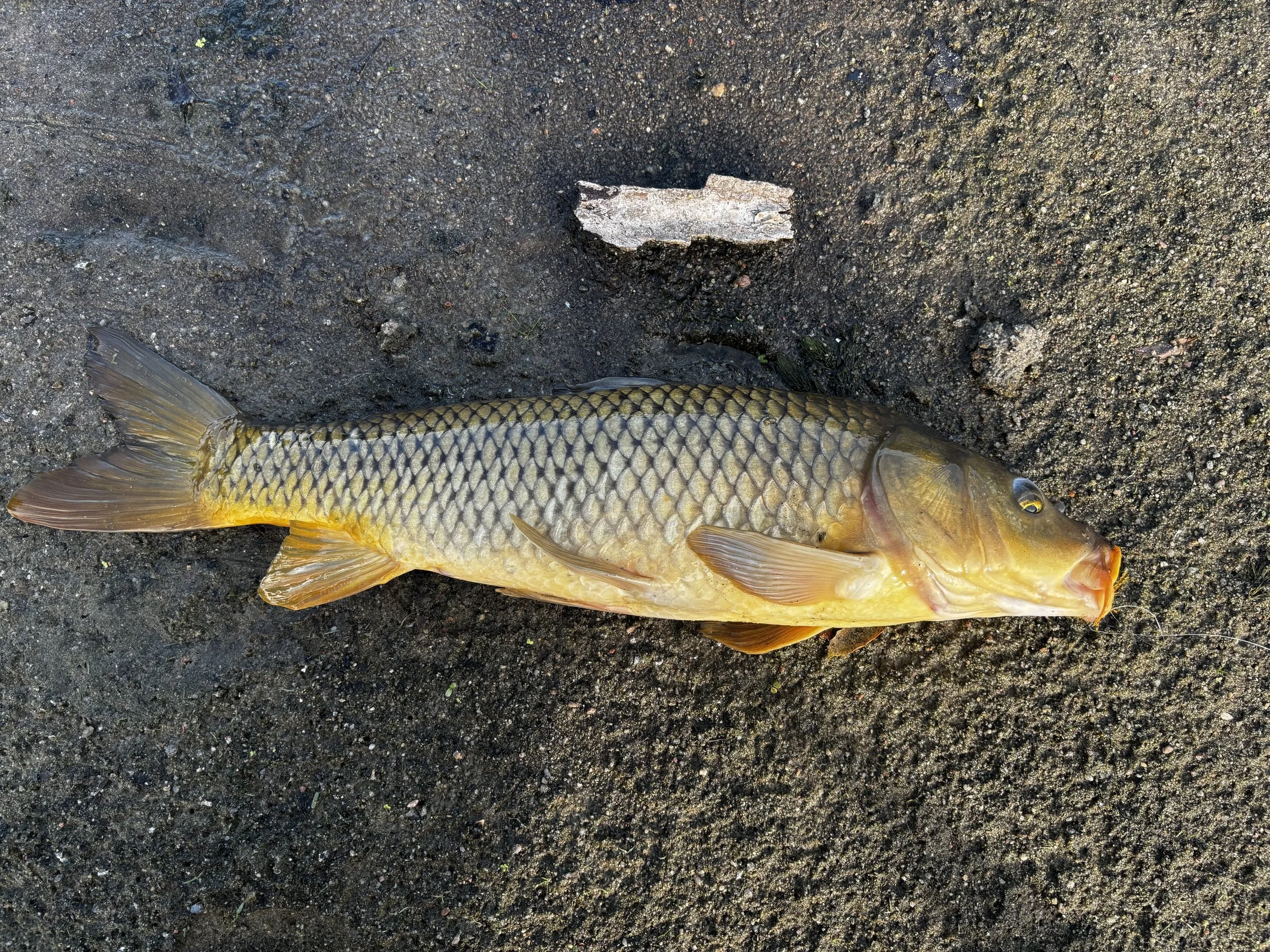Carp
In Nebraska, carp are widespread and can be found in almost every lake, reservoir, river, and pond across the state. They thrive in warm, slow-moving, and nutrient-rich waters, making many Nebraska lakes ideal carp habitats.
-
Carp are omnivorous bottom feeders, meaning they’ll eat a wide variety of plant and animal material they find while rooting around the lake
Natural Foods
Aquatic plants and algae – They graze on soft vegetation and plant debris
Insect larvae and aquatic bugs – Mayflies, midges, and other invertebrates
Worms and snails – Dug from mud and soft sediment
Small crustaceans – Like freshwater shrimp and tiny crayfish
Fish eggs – Occasionally eaten if they come across nests
Scavenged or Opportunistic Food:
Dead or decaying fish and animals
Grains or seeds washed into the water during runoff
Anything edible stirred up in muddy or flooded areas
-
Carp spawn in late spring to early summer, usually when water temperatures reach around 65–75°F (18–24°C). In Nebraska, this typically happens from May through early July, depending on weather and water conditions.
-
Large reservoirs and lakes:
Lake McConaughy
Branched Oak Lake
Harlan County Reservoir
Sherman Reservoir
Elwood Reservoir
Smaller lakes and ponds:
Wagon Train Lake (Lincoln area)
Bluestem Lake
Pawnee Lake
Mahoney State Park ponds
Slow-moving river backwaters and oxbows:
Along the Platte River and Missouri River systems
Shallow, weedy bays, and flooded areas near shorelines
Carp were brought to America in the 1800s as a deliberate effort to provide a reliable, fast-growing food source. Immigrants from Europe, where common carp had long been valued, missed the familiar fish and encouraged its introduction. Around the 1870s and 1880s, the U.S. Fish Commission, now the U.S. Fish and Wildlife Service, began importing carp from Europe and Asia. They were raised in hatcheries and widely distributed across the country, including to farm ponds, public lakes, and rivers. By 1885, more than 250,000 carp had been stocked in 34 states.
At first, carp were celebrated as a “miracle fish” that could feed rural communities, thrive in a wide range of waters, and grow quickly on limited resources. However, their impact on native ecosystems was soon realized. Carp stir up sediment as they root along the bottom, muddying the water and destroying aquatic vegetation that many native fish and waterfowl depend on. Their ability to reproduce rapidly and tolerate poor water quality allowed them to spread across nearly every major river system, including those in Nebraska.
By the early 1900s, attitudes had shifted. Once praised, carp were now seen as a nuisance and an invasive threat to native wildlife. Despite this, they remain deeply rooted in the U.S., both ecologically and culturally. Today, carp are still targeted for food in some communities and have gained popularity among sport anglers and bowfishers. While their introduction came with good intentions, carp have become one of the most widespread and controversial fish in America’s freshwater systems.
I have a lot of fun fly fishing for carp especially with how tricky it can be to hook one, To catch a carp on a fly rod, you’ll need to sight-fish in shallow, calm water where carp are actively feeding. These are usually muddy flats, weedy coves, or backwaters where you can see them tailing, cruising, or mudding (stirring up sediment as they root around). The key is to approach quietly, present the fly naturally, and be ready for a long fight once the fish takes. To catch on is a thrill because the gear your using is light weight you can really feel the fight. 10 out of 10 definitely recommend trying.

